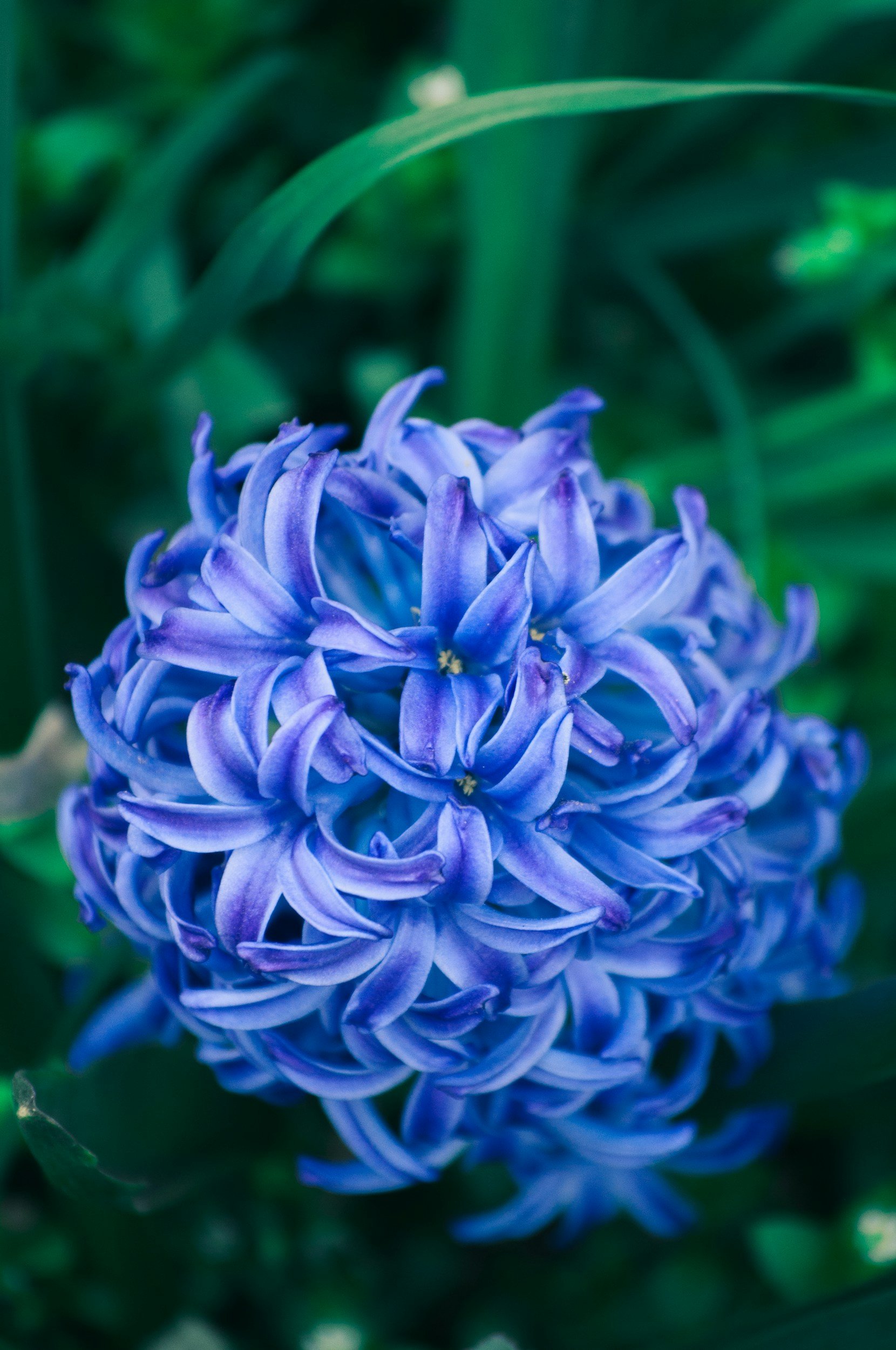Episode 56: Mouth Burn-y Blooms & A Chariot of Silly Geese- Hyacinth
Hello and welcome to another episode of Rooted! This week we’re digging into another spring bloom you’ve probably seen everywhere recently- Hyacinth.
Hyacinth, or Hyacinthus are spring blooming perennials in the asparagaceae family, with famous family members like asparagus, yucca, and agave.
They are best known for their fragrant blooms made of up a bunch of little flowers on smaller stalks- kind of like lilacs, but with larger star-shaped blooms. They tend to get about 6-8 inches tall, and are flanked by spikey deep green leaves!
Much like other floral favorites, there are a TON of varieties randing in color, size, flower shape, etc. For this episode we’ll be talking about them generally, but for the most part, the species you are likely most familiar with is hyacinth orientalis, which is typically sold at nurseries, in grocery stores, and pretty much everywhere in the mid spring! Unless you were thinking of GRAPE hyacinth…then I have good news and bad news for you. The bad news? They technically aren’t hyacinths at all! In fact, those little cuties are botanically known Muscari armeniacum, and are actually members of the lilly family…the good news in all of that? They are actually edible, unlike their toxic, mouth burn-y friends.. In fact, grape hyacinth is a favorite among fancy chefs and urban foragers alike, and since it’s blooming now, I’m sure you’ll find ideas on how to use it all over the internet right now…
But back to regular hyacinths
Most hyacinth varieties can trace their roots back generally to the eastern mediterranean region, but have since naturalized anywhere there is rocky, disturbed soil up for grabs.
They don’t need much water, and aren’t too picky with soil type or temperature, making them a really popular favorite for bringing in early color without a fuss.
As I mentioned earlier, all parts of hyacinth are toxic. Is is because they contain oxalic acid, which can cause skin irritation and mouth/tummy troubles in low doses, and eventual death in much higher doses.
Because of that, there really aren’t a ton of medical or culinary uses as you might imagine. So instead of those segments, today we’ll really focus on the myth and magic part of the show!
As far as myth goes, there is actually a pretty famous story and character that revolves around this flower.
Hyacinth was a spartan prince who fell madly in love with apollo. His beauty was so striking that Apollo wasn’t even the only god obsessed with him..in fact, he had like 3 other gods just waiting in the wings hoping Apollo would get tired and break up with him…but Apollo never did. Apollo loved hyacinth so much that he actually left his super cozy mansion to live on earth with hyacinth, and spent their endless numbered days teaching hyacinth as many godly things as he could. He even gifted him a chariot pulled by swans…and if that’s not love, I don’t know what is.
But of course, in Greek mythology true love never lasts…and it’s almost always interrupted by untimely death. Unfortunately, the love between hyacinth and apollo is no exception, as one of those jealous little scrubs zephyrus (the god of the west wind) decided if he couldn’t have hyacinth, no one could…so, as apollo was teaching hyacinth a new game with a discus, the west wind suddenly picked up, smashing that heavy ass frisbee right into hyacinths noggin.
Apollo was obviously horrified, and tried everything he could to save the love of his life. But nothing worked, he was gone. Desperate, he turned to hades, asking him to make apollo mortal so he could join hyacinth in death, but hades refused. So, Apollo decided to make a flower as lovely and charming as his man, leaving us with the hyacinth we know and love today.
But his story doesn't actually end there. Apparently Apollo did eventually find a way to bring his lover back, swan chariot and all, and they live happily ever after as gods, with hyacinth sort of taking on a role in the death/rebirth arena of godship, and later getting a whole 3 day festival and cult to show for his time in the underworld.
In magic, this penchant for life and rebirth shows up in a lot of the symbols ways the plant is used. And because it can be a variety of colors, it is typically used in spring as a way to bring those colors into the space and on to the altar as a way to celebrate life and rebirth.
It’s also commonly used in christianity around this time as a part of easter celebrations, with the plant also then symbolizing the death and eventual reanimation of jesus christ.
With so much symbolism and so little care for growing conditions, it’s easy to see how this plant spread so quickly across the globe. Next time you see one, I hope you take a second to say hello, give it a good sniff, and think about the fact that it’s beauty comes from a man so beautiful, he convinced a god to gift him the silliest goose of chariots.
That’s all I’ve got for this week, but I’ll be back next week with another episode! See you then!
Sources:
https://en.wikipedia.org/wiki/Hyacinth_(mythology)
https://en.wikipedia.org/wiki/Hyacinth#
https://hort.extension.wisc.edu/articles/grape-hyacinth-muscari-armeniacum/
https://www.patheos.com/blogs/voodoouniverse/2016/05/herbal-magick-hyacinth/
https://powo.science.kew.org/?name_id=278581
https://powo.science.kew.org/taxon/24372-1
https://web.archive.org/web/20130404065021/http://www.ces.ncsu.edu/depts/hort/hil/hil-8507.html
https://www.patheos.com/blogs/voodoouniverse/2016/05/herbal-magick-hyacinth/

